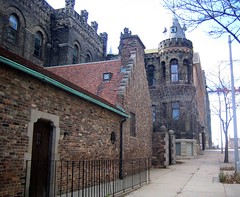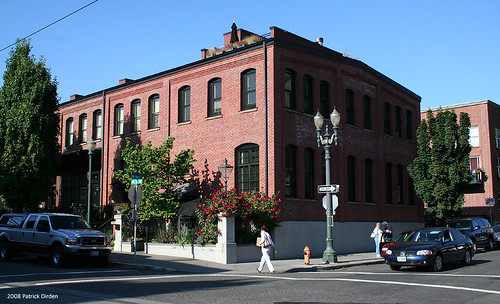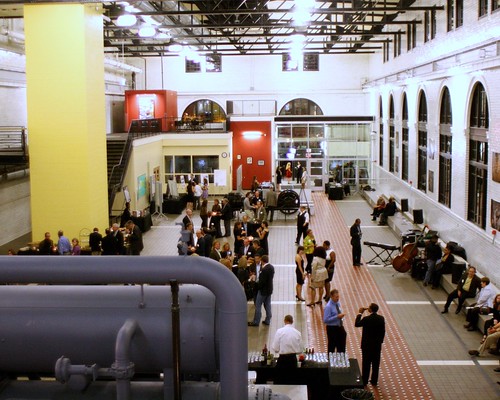The green dividend from reusing older buildings

Posted January 24, 2012 at 6:00PM
We already know that, in many cases, retaining older buildings - especially those of architectural or historic character - can strengthen the enduring legacy and enjoyment of a community. But is it good for the environment? Lots of people think so, including architect Carl Elefante, who coined the wonderful phrase, “the greenest building is one that is already built,” because you don’t have to use environmental resources in constructing its replacement. (I have added that the phrase is most likely to be true if the building is in the right context.) But, especially considering the advanced green technology available for new construction, do the facts back that up?
The Preservation Green Lab of the National Trust for Historic Preservation has just released a detailed new study (available here) directly addressing these important questions. The study concludes that it can take between 10 and 80 years for a new, energy-efficient building to overcome, through more efficient operations, the negative energy and climate change impacts caused in the construction process. The study cautions, however, that there are environmental resources expended in rehabbing an older building as well; care must be taken in the selection of materials used in the rehabilitation or adaptation of older buildings, since “the benefits of reuse can be reduced or negated based on the type and quantity of materials selected for a reuse project.”
These questions are especially important because of the sheer volume of building replacement and construction that routinely takes place in America. From the study’s executive summary:
“Every year, approximately one billion square feet of buildings are demolished and replaced with new construction in the United States. The Brookings Institution projects that some 82 billion square feet of existing space will be demolished and replaced between 2005 and 2030 – roughly one-quarter of today’s existing building stock. Yet, few studies to date have sought to examine the environmental impacts of razing old buildings and erecting new structures in their place. In particular, the climate change implications of demolition and new construction, as compared to building renovation and reuse, remain under-examined.”
The report looked at a range of six building types in each of four climatically diverse cities across the US: Portland, Phoenix, Chicago and Atlanta. The six categories of building reuse comprised a single-family home; a multifamily building; a commercial office building; a mixed-use building in an “urban village”; an elementary school; and warehouse conversion. The study examined the role that geography, energy performance, electricity-grid mix, building type and building lifespan have on overall environmental performance.
According to a press release and the executive summary, major findings from the report include:
 Building reuse typically offers greater near-term environmental savings than demolition and new construction. This study finds that, for five of the six building types considered in the study, it can take 10 to 80 years for a new building that is 30 percent more efficient than an average-performing existing building to overcome the negative climate change impacts related to the construction process. (I’ll get to the exception in a minute.)
Building reuse typically offers greater near-term environmental savings than demolition and new construction. This study finds that, for five of the six building types considered in the study, it can take 10 to 80 years for a new building that is 30 percent more efficient than an average-performing existing building to overcome the negative climate change impacts related to the construction process. (I’ll get to the exception in a minute.)- Benefits are maximized when building reuse is practiced at scale. Retrofitting, rather than demolishing and replacing, just one percent of Portland’s office buildings and single family homes over the next decade would help to meet 15 percent of Multnomah County’s total CO2 reduction targets over the next decade.
- The greatest environmental benefits of reuse are achieved by minimizing the input of new construction materials.
The study is overwhelmingly about energy use and related greenhouse gas emissions, which it thoroughly examines. Yet there are also numerical findings associated with human health, ecosystem quality, and resource depletion. Resource depletion is fairly straightforward, but the inclusion of “human health” and “ecosystem quality” raises more questions than answers. Neither is really explained in the 94-page report, though there is a list (and only a list) of indicators that includes, under human health, such topics as toxicity, radiation, and respiratory effects; and, under ecosystem quality, “aquatic ecotoxicity,” “terrestrial acidification and nutrification (eutrophication),” and “terrestrial ecotoxicity.” Despite these apparent inclusions, the study explicitly excluded water consumption during building occupancy, as well as respiratory and other health effects related to material off-gassing and the resulting effects on indoor air quality.
 If one wants to know more about these elusive categories, such as how building retention and/or construction affects the indicators, or the assumptions used, one apparently may consult the “Technical Appendices,” which were not made available in time for this story. (To the extent I can make educated guesses, I have a hunch that we should put a lot more stock in the study’s conclusions with regard to energy than those with regard to human health and ecosystem quality. Those topics are probably worthy of their own study rather than being secondary and somewhat obscure topics in a study that so plainly emphasizes energy and climate.)
If one wants to know more about these elusive categories, such as how building retention and/or construction affects the indicators, or the assumptions used, one apparently may consult the “Technical Appendices,” which were not made available in time for this story. (To the extent I can make educated guesses, I have a hunch that we should put a lot more stock in the study’s conclusions with regard to energy than those with regard to human health and ecosystem quality. Those topics are probably worthy of their own study rather than being secondary and somewhat obscure topics in a study that so plainly emphasizes energy and climate.)
Now to that sixth building category for which the findings were not so great, even with respect to energy. Specifically, the study found that conversion of older warehouses to apartments and/or condominiums typically yielded smaller to negligible near-term energy and climate benefits (and negative impacts on human health and ecosystem quality) compared to new construction. One conclusion to be drawn from this finding is that it is especially important to take advantage of green materials and construction techniques when working with this type of project.
The finding is still a bit troubling, especially given the popularity of warehouse adaptations to preserve and foster community character. I hope the National Trust will continue to pursue research that can improve the environmental benefits for this important type of adaptive reuse.
That said, the study shows that, for most building types, adaptive reuse of older buildings produces measureable - and sometimes impressive - green benefits. The findings with respect to energy impacts for most buildings and adaptations are overwhelmingly positive, and effectively remove one of the arguments that is sometimes made against preservation and adaptation. The study is the most comprehensive analysis to date of the potential environmental benefits associated with building reuse. It examined cumulative life cycle impacts over the course of a projected 75-year period.
Major funding for the study was provided by The Summit Foundation. The Trust's study partners included Cascadia Green Building Council, Quantis LLC, Skanska, and Green Building Services.
Move your cursor over the images for credit information.
Please also visit NRDC’s Sustainable Communities Video Channel.

